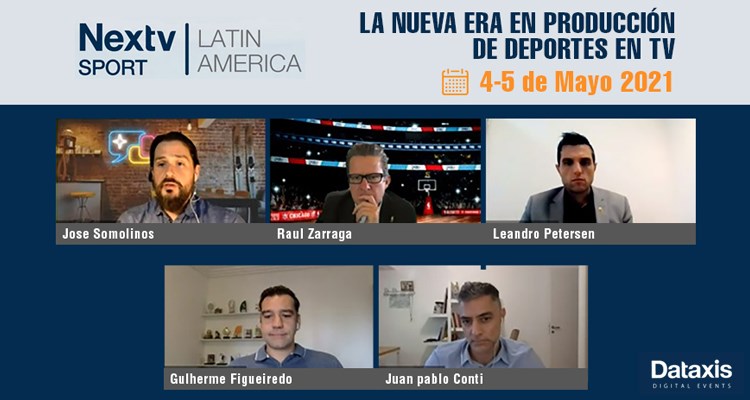
The issue of the cost of sports rights took a prominent role among the various conclusions reached at the NextTV Sport Latin America conference held this month by Dataxis with participants from sports clubs, regional leagues and eSports companies, as well as cable operators and streaming services,
The discussion is complex: on the one hand, rights holders are requesting increasing amounts of money for the renewal of existing contracts. On the other hand, FTA stations, pan-regional and local sports channels, and OTT’s as a growing force, warn that the pandemic and piracy, among other factors, are limiting their ability to pay for these rights.
This conflict arose among the current existing broadcast channels and the sporting events producers at several panels. Streaming systems managed by the clubs themselves, groups of them and the sports associations were one of the alternatives being considered. The case of Mexican soccer club Chivas, which was unsuccessful a couple of years ago when tried to replace over-the-air TV transmissions with its own OTT, was discussed in depth.
The reality imposed by the pandemic has decimated income from stadium tickets, but also affected the number of broadcasts and the emotional effect on audiences, as there was no live audience attending. This has prompted many Latin American clubs to try to reach their fans directly through OTT services with programming related to their current sports stars, past events and relevant sports activities, seeking to appeal to the emotional feelings of their ‘fans’ and gather attention by followers of other sports — basketball, tennis, baseball, athletics among them– with lower profile but similar engagement levels.
The recent resounding failure of the European Super League, when several clubs from European countries and Great Britain tried to form an élite circle, and the financial troubles of clubs such as Barcelona, as well as more light focused on businesspeople and club-owning entities around the world, helped to understand that the sports industry is facing a problem. And, that it will be necessary to innovate in order to continue expanding, beyond the adhesion of millions of followers and the indisputable importance of tournaments such as the World Cup, the America Cup, the Libertadores and the Regional leagues in Europe and Latin America.

To the clubs, the opportunity is to capitalize on the engagement of their fans by building audiences for TV programs, such as Brazilian Gremio on DirecTV in that country, and the streaming services that have replaced vintage radio programming. This, supported by the sponsors with whom they have been working on broadcast sporting events and outdoor advertising. Technology can help, with resources such as virtual panels at stadiums, Augmented Reality and Virtual Reality elements –such as on-screen statistics, remote broadcasts and player tracking– that increase visual impact, and a certain “demographic personalization» to fight the decline in interest by younger audiences. Shorter attention gaps compared to the hours of watching that certain sports demand, and the need to have content adequate for reception by smartphones, where the size and quality of picture are lower than that of the TV receiver screen, are being scrutinized, too. Potential audiences that live outside the country, such as Latinos in the United States, are getting increased attention through advertising and promotion segmentation.
From the conference it turned out that there will be a much greater offer of these ‘personalized’ services in the near future. But, there will be also further fragmentation of transmission rights that will make it necessary to provide the ‘fans’ with additional information in order to allow them to locate the transmission of the matches of their interest, slashing or at least reducing the tuning of pirated broadcasts.







